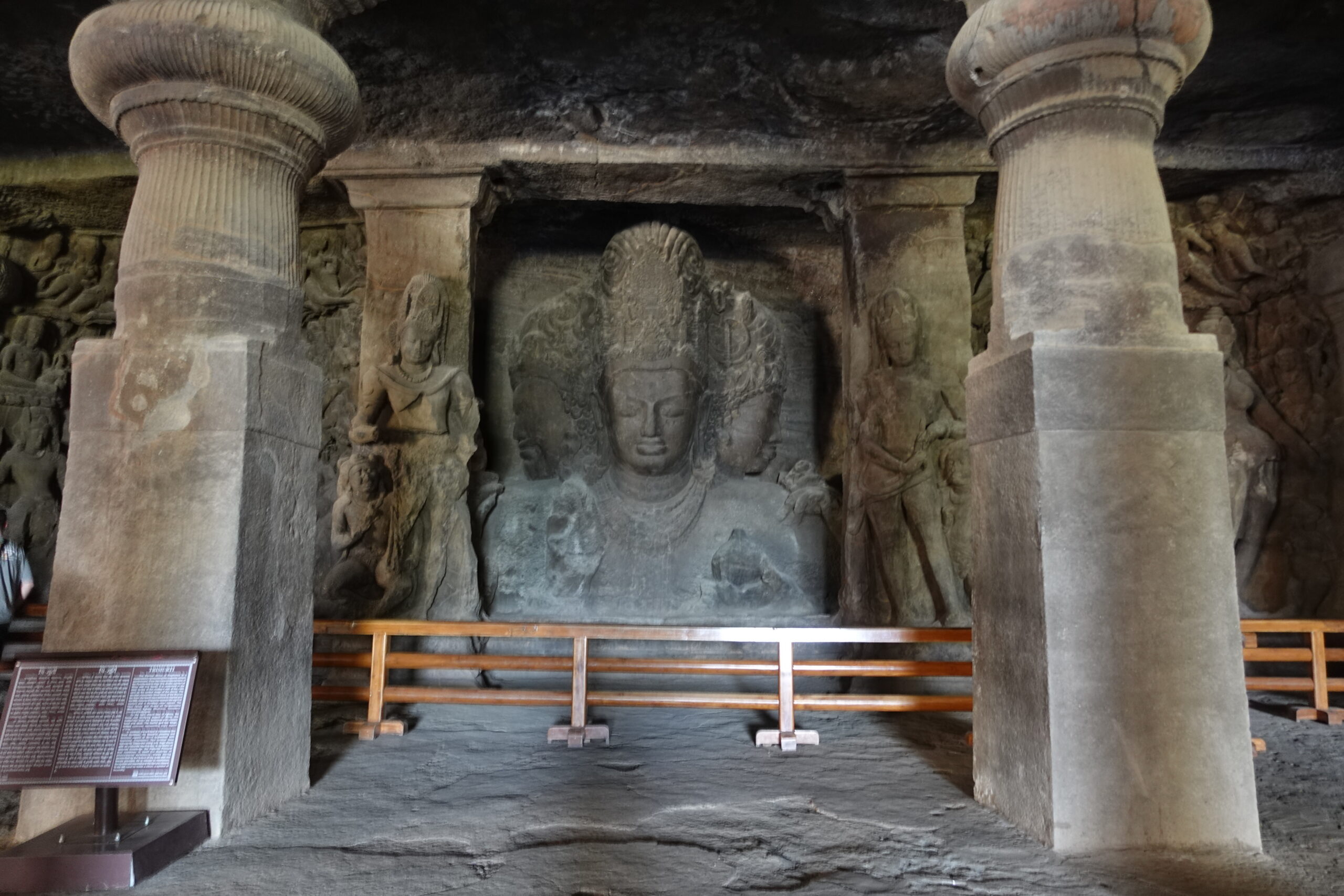Travels in India and Sri Lanka (18)
Impressed by the huge statue of Shiva at Elephanta Grottoes off the coast of Mumbai! The white star of Hindu sculpture!
After enjoying the great stupa in Saanchi, my next stop was Mumbai, a cosmopolitan city on the west coast of India.

I was surprised at the humidity here in South India, having flown in from Bhopal. The difference in humidity was obvious from the moment I arrived. I was sensitive to this change because of the thirsty land around Sanchi.

The plants growing on the road are truly tropical.
It is clear that the tropical climate is very different from that of North India. Mumbai has neither extreme heat nor cold like Delhi. The only difference is the existence of dry and rainy seasons.
I sweat even when I am not doing anything. It feels as if the sweat clings to you forever without ever going away. It is similar to the heat of Tokyo. Oh, so Tokyo is already in the tropics...
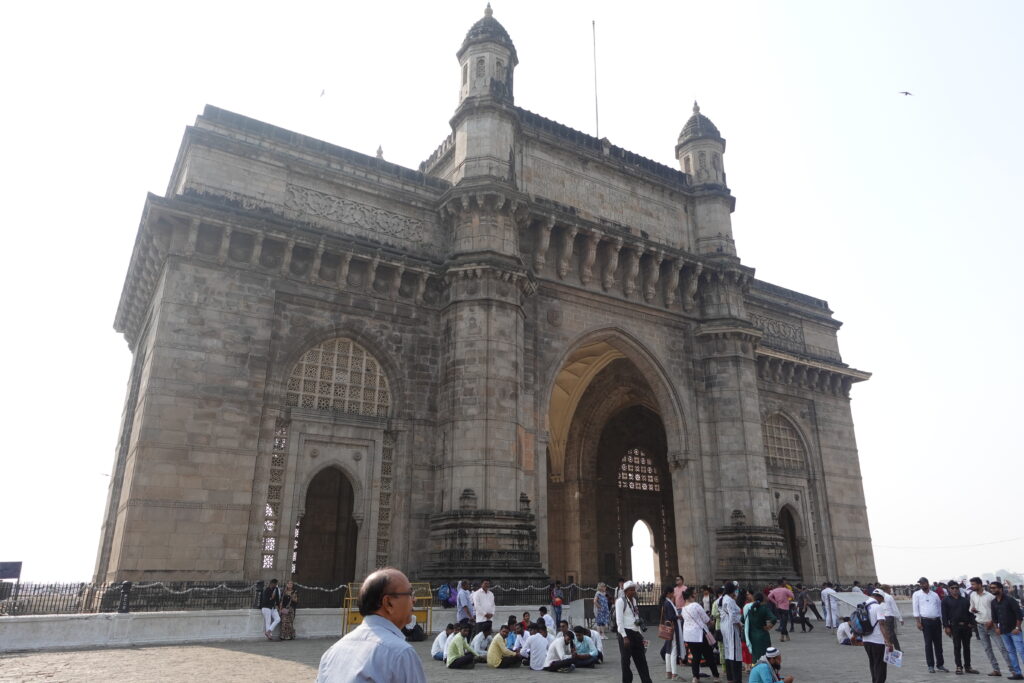
I came to Mumbai this time to visit the famous Buddhist sites of Ajanta and Ellora. Mumbai is the base city to get there.
However, Mumbai itself has its own interesting ruins. That is the Elephanta Grottoes, a Hindu site that I will discuss in this article.
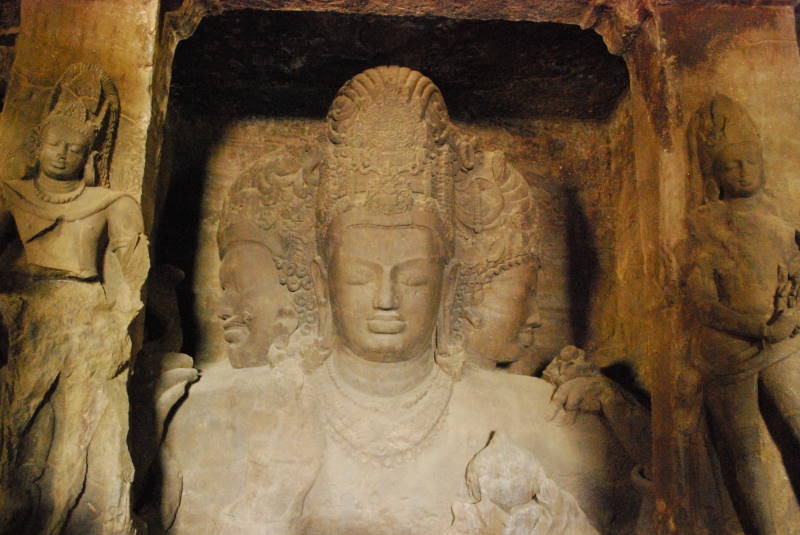
As shown in the map above, the Elephanta Grottoes are Hindu ruins located on Elephanta Island in the Gulf of Mumbai. The three-faced statue of Shiva here is renowned as one of India's masterpieces. Before heading to Ajanta and Ellora, I would like to see this statue. So I took a boat from Mumbai to Elephanta Island.
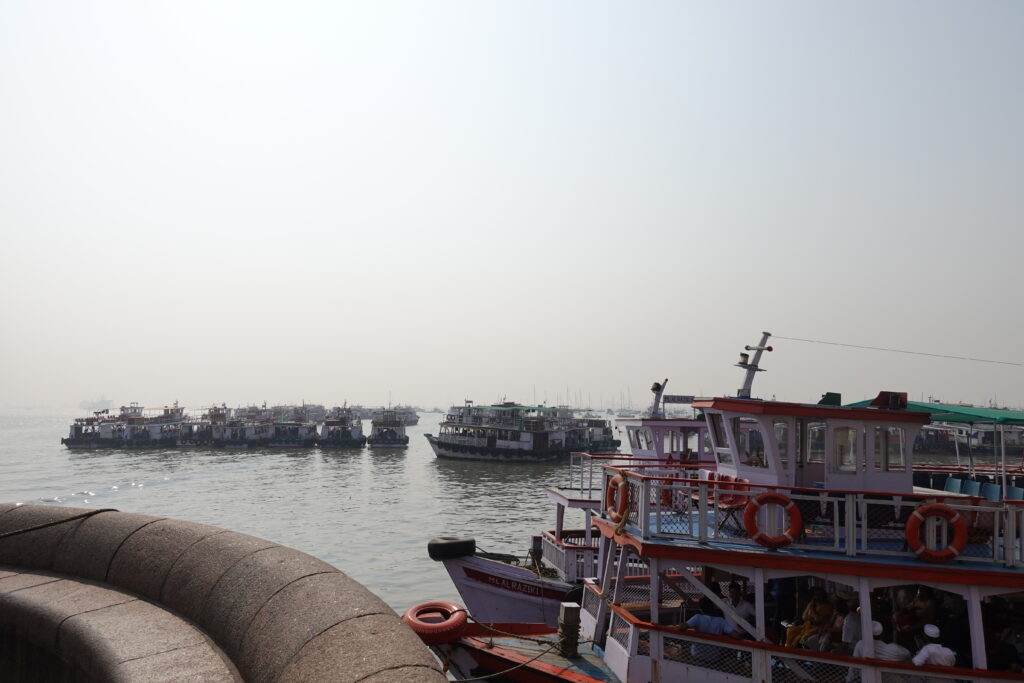

The ship leaves right by the India Gate.

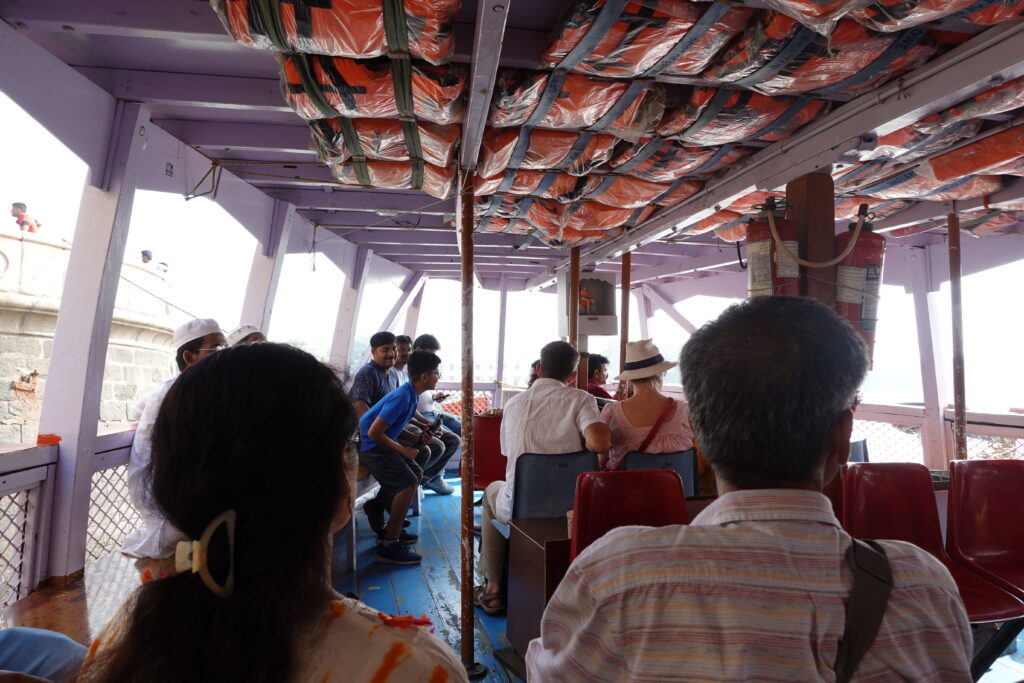
There are many foreign tourists as well as Indians. The boat I boarded was almost full.
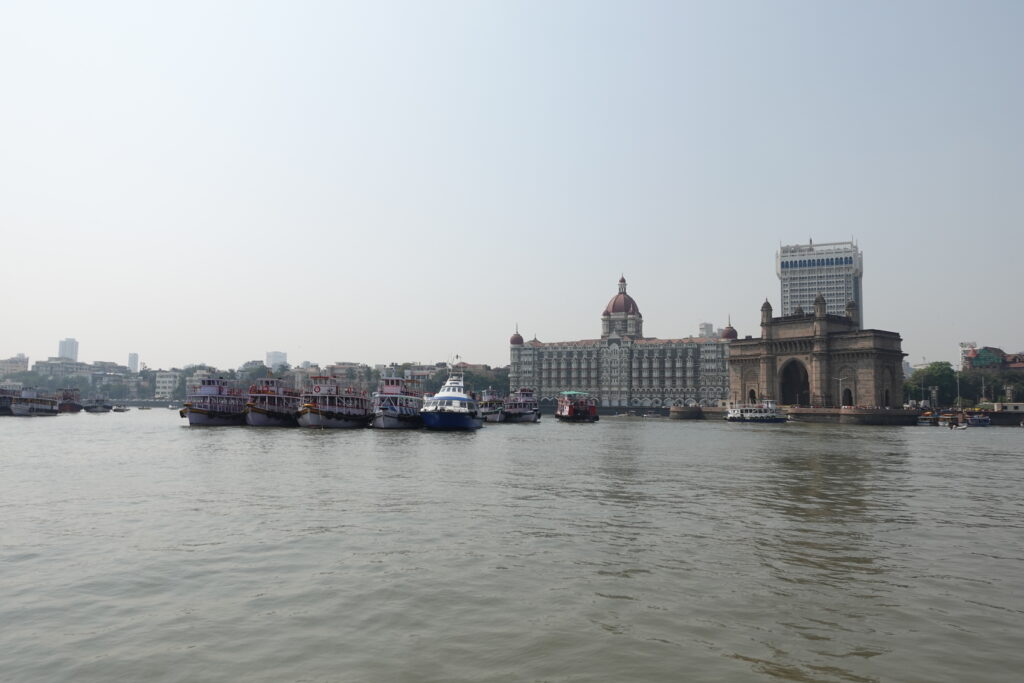
The palatial building in front is the Taj Mahal Hotel, a top-class hotel, which is still fresh in the memory of the 2008 terrorist attack that left many people dead.
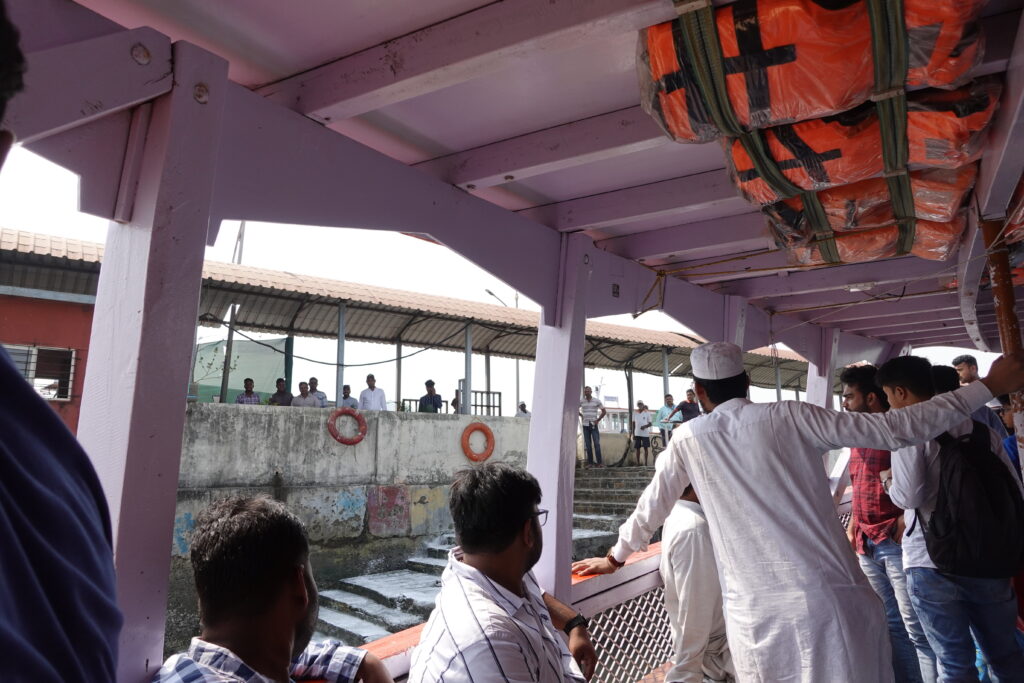
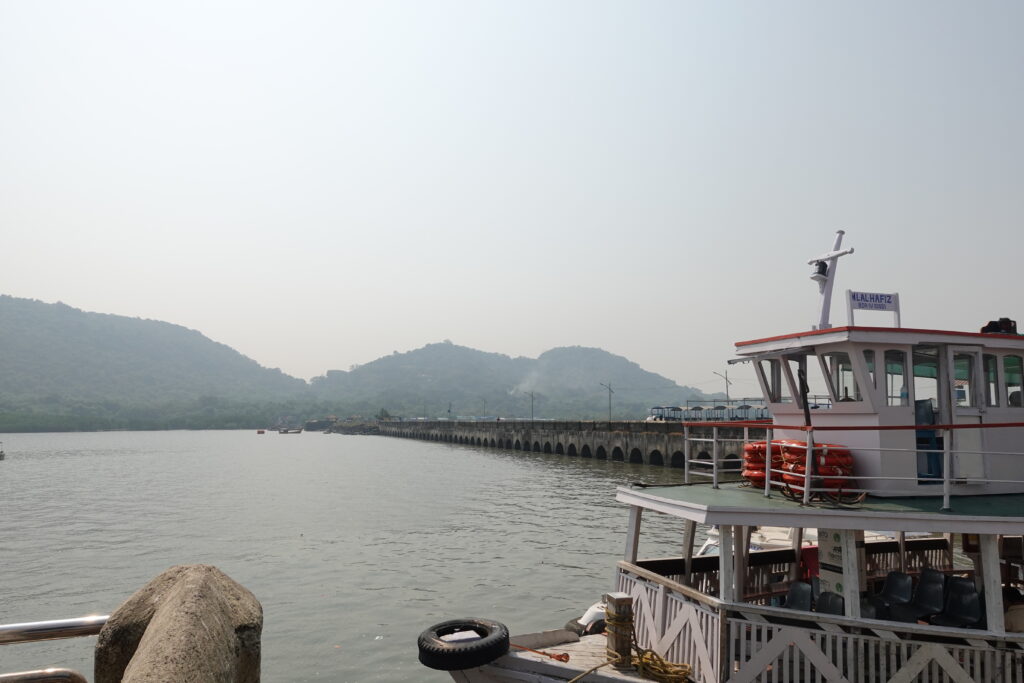
After leaving Mumbai, it takes about an hour to arrive at Elephanta Island.
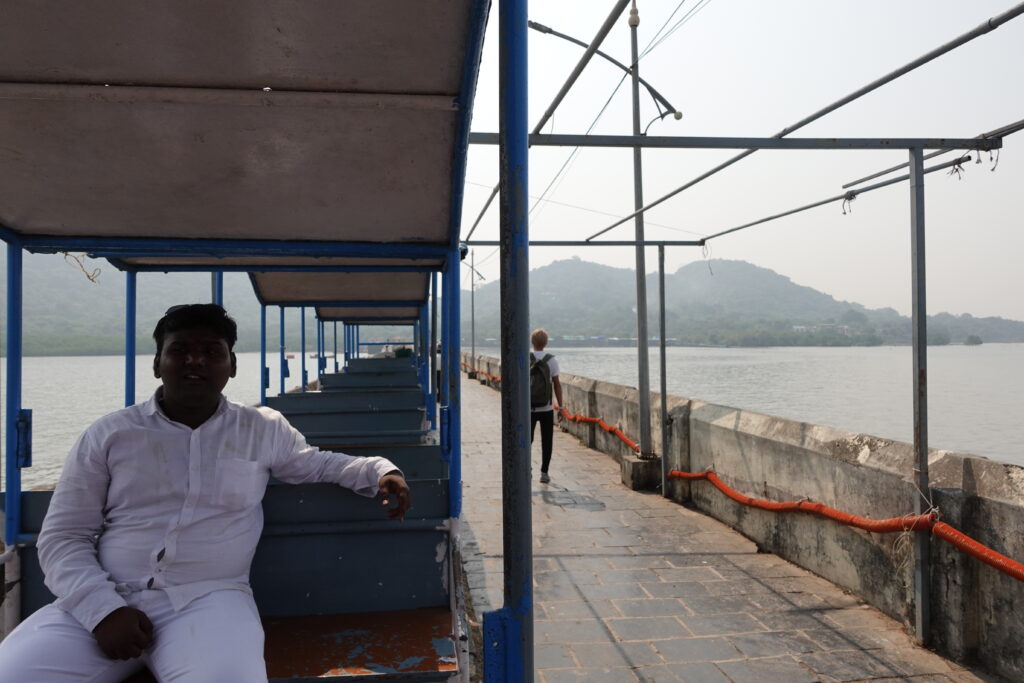
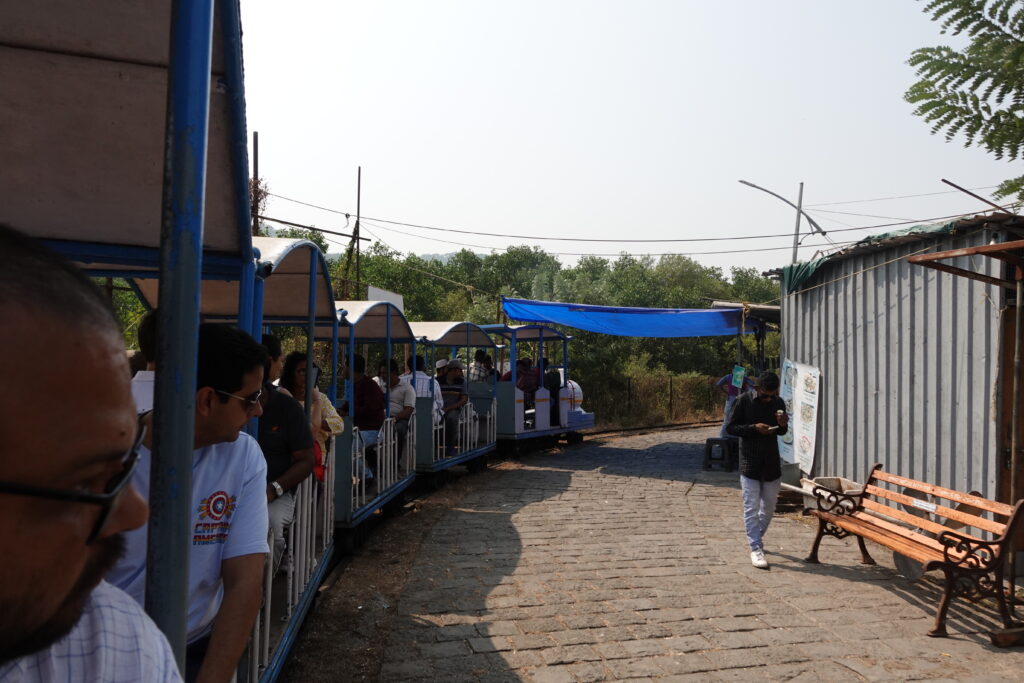
A trolley train was waiting just off the boat. It is quite a long walk from the boat landing to the Elephanta Grottoes. Walking it under the scorching sun was quite difficult. Many tourists took this train to the center of the island.

The ride lasted only a few minutes, but it was a very relaxing experience to sway leisurely while feeling the sea breeze. As you can see, the first car is a fairy-tale style that looks like it could be in any amusement park. Perhaps it really was brought from an amusement park somewhere. It would be quite possible in India.
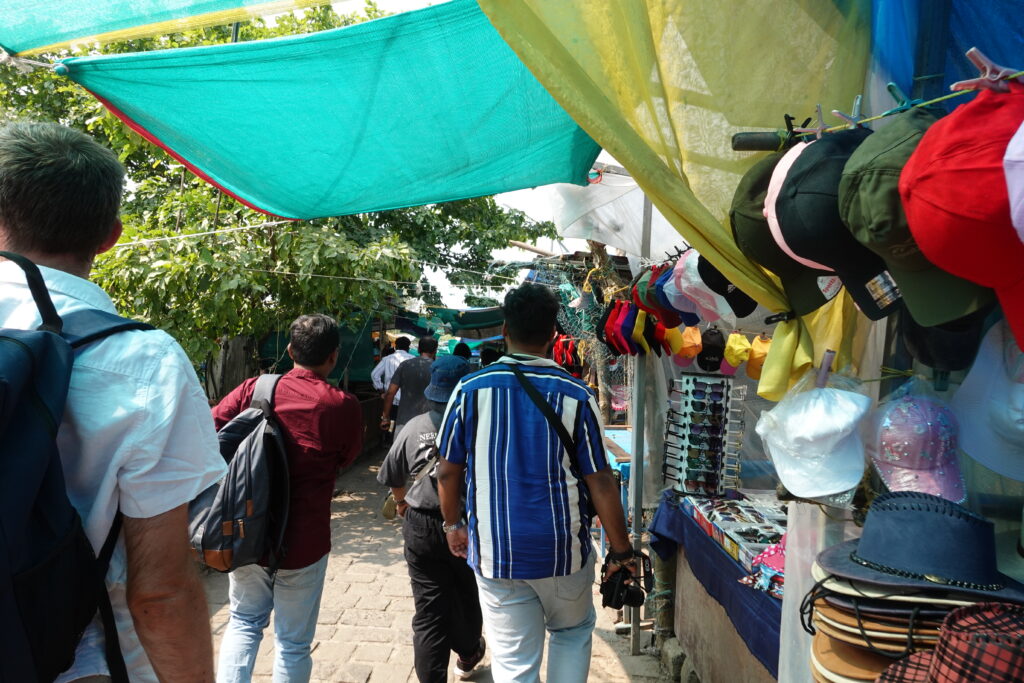
The approach to the temple is lined with souvenir shops and food stalls. From here, it is a walk.
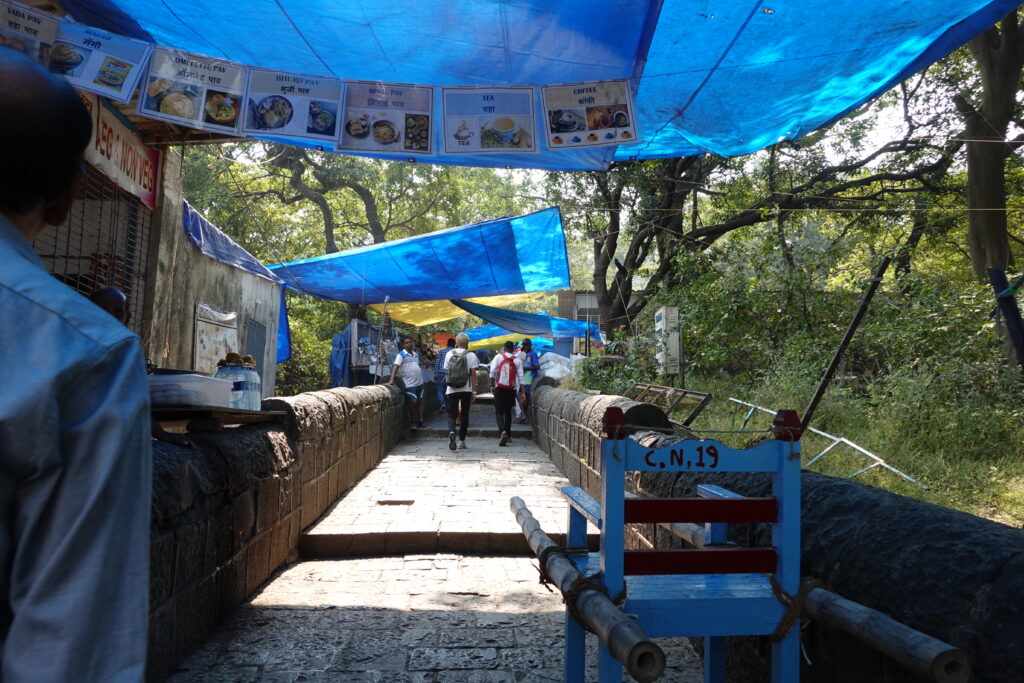
The Elephanta Grottoes are located on top of a mountain. From here, you will have to climb up a series of stairs and slopes. Blue sheets are hung over our heads to protect us from the intense direct sunlight.
However, this covering has caused the heat to build up like a steam bath, and either way, it is very hot. I was already sweating.
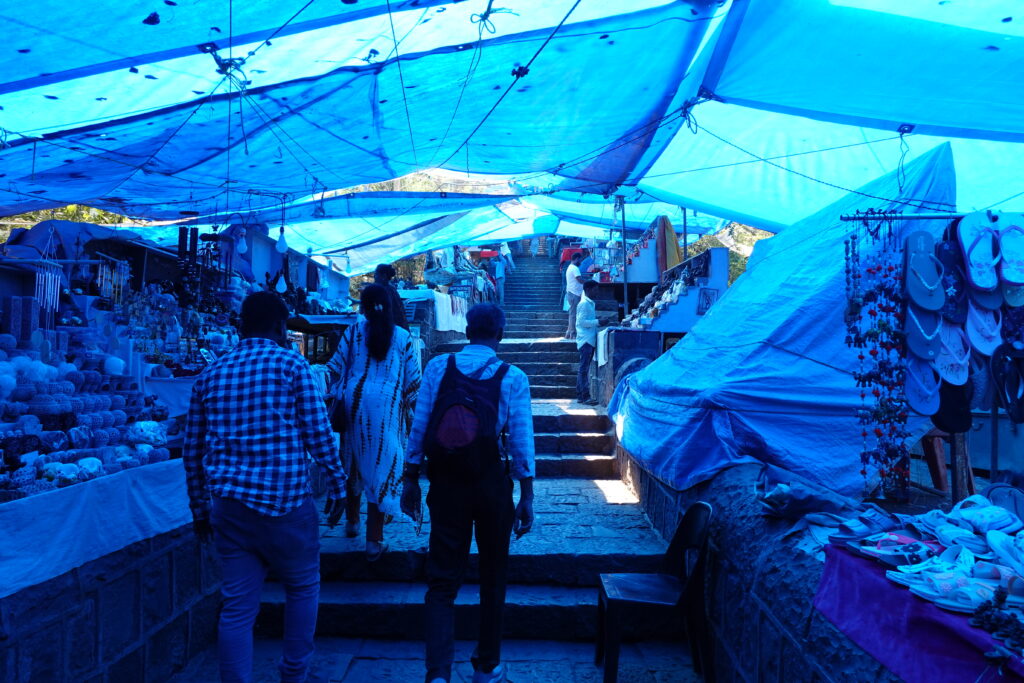
We are almost there. I'm getting used to the blue world.
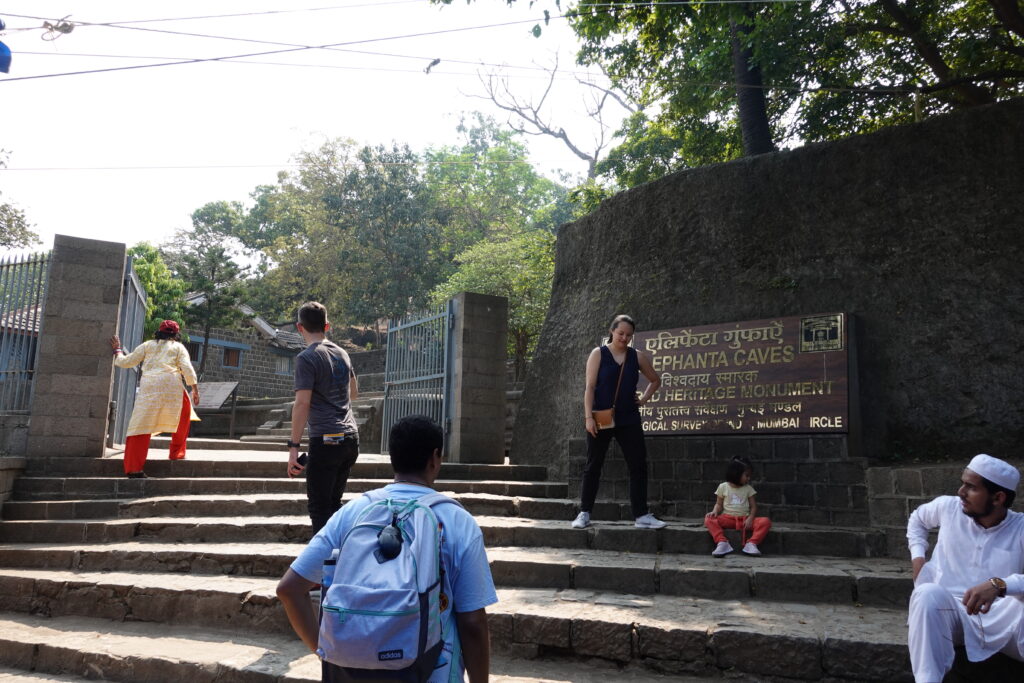
Finally arrived at Elephanta Grottoes. Quite a sense of accomplishment.
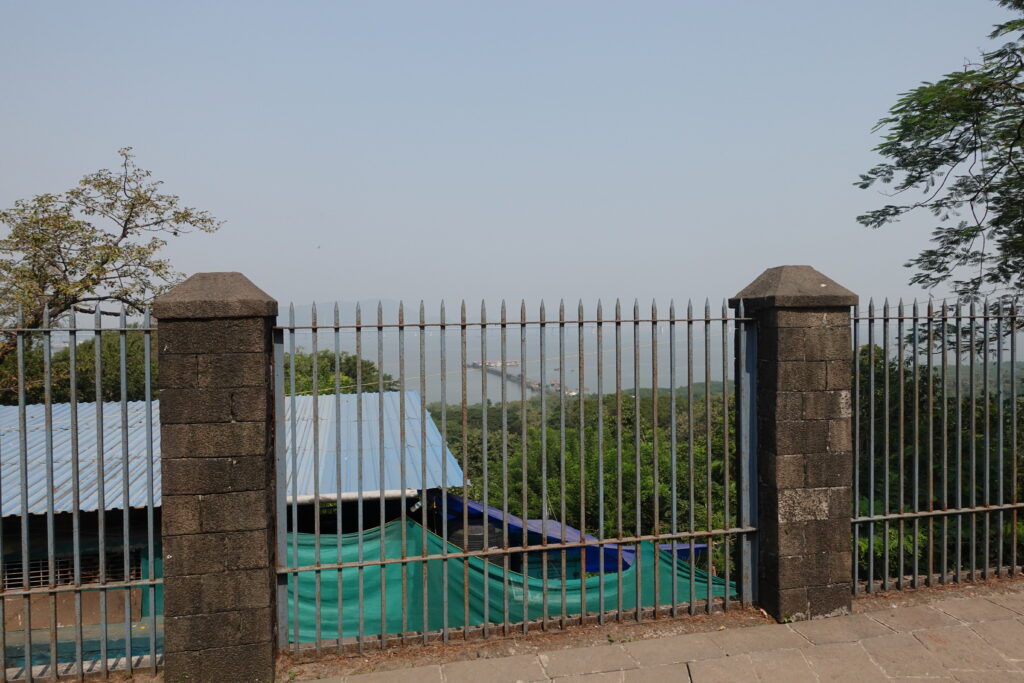
The landing place where we were just now seems very far away. I can see that we have climbed up to a very high place.
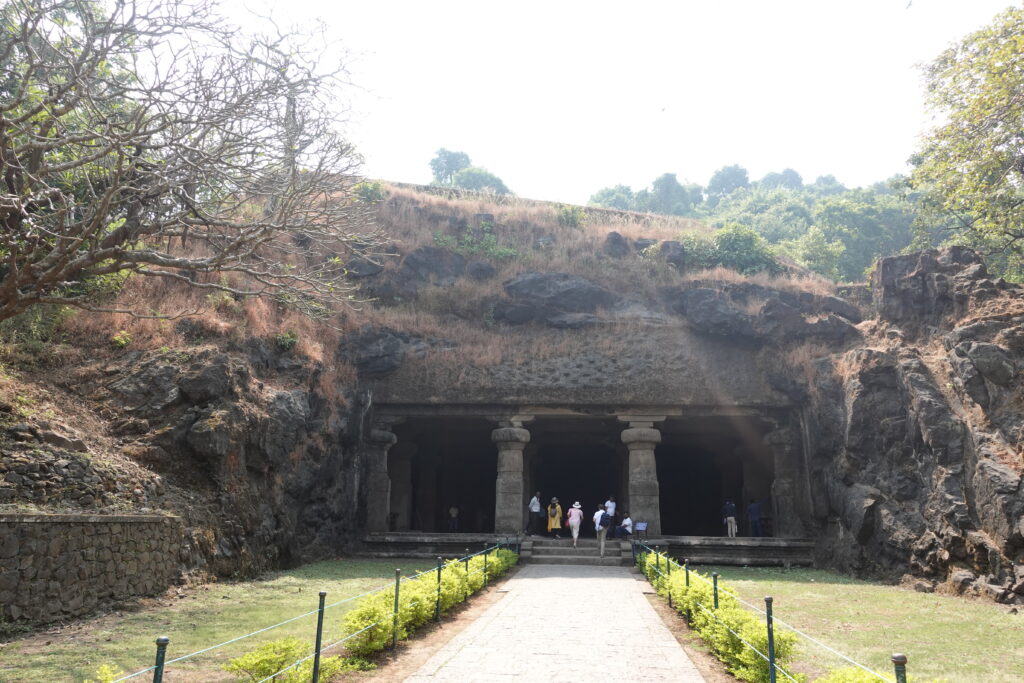
This is the entrance to the Elephanta Grottoes.
The atmosphere is exactly like a cave carved out of a rocky mountain.

And the moment I walked in, I was surprised! The air was cool! Dr. Motoi NakamuraThe Ideal of Living in Buddhist Art.In the "The Grottoes of India," the interior of these cave temples are described as "old Indian-style air-conditioning," which is quite understandable. It is very different from the hot and humid outdoors. It is really comfortable. This is the wisdom of the ancient Indians. It is said that the rocky mountains in South India are suitable for carving, and many of these cave temples were built to avoid the hot and humid climate.
These geological and climatic differences are the main reason why there are so many huge cave temples in South India, which are different from those in North India such as Delhi.
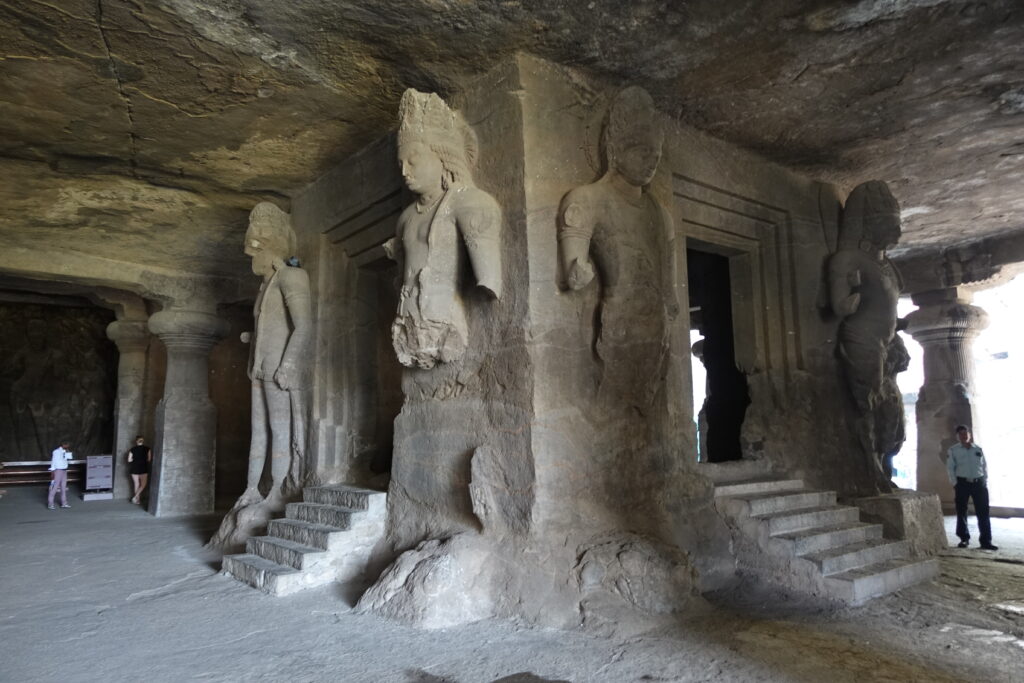
I was surprised by the coolness of the grotto as soon as I entered, but I would like to add that I was also visually shocked.
The expanse of space, the stout pillars, and these huge stone statues were also overwhelming. The statues were powerful, but also serene. This overwhelming presence reminded me of the Buddhist statues in the Lotus Hall of Todaiji Temple.
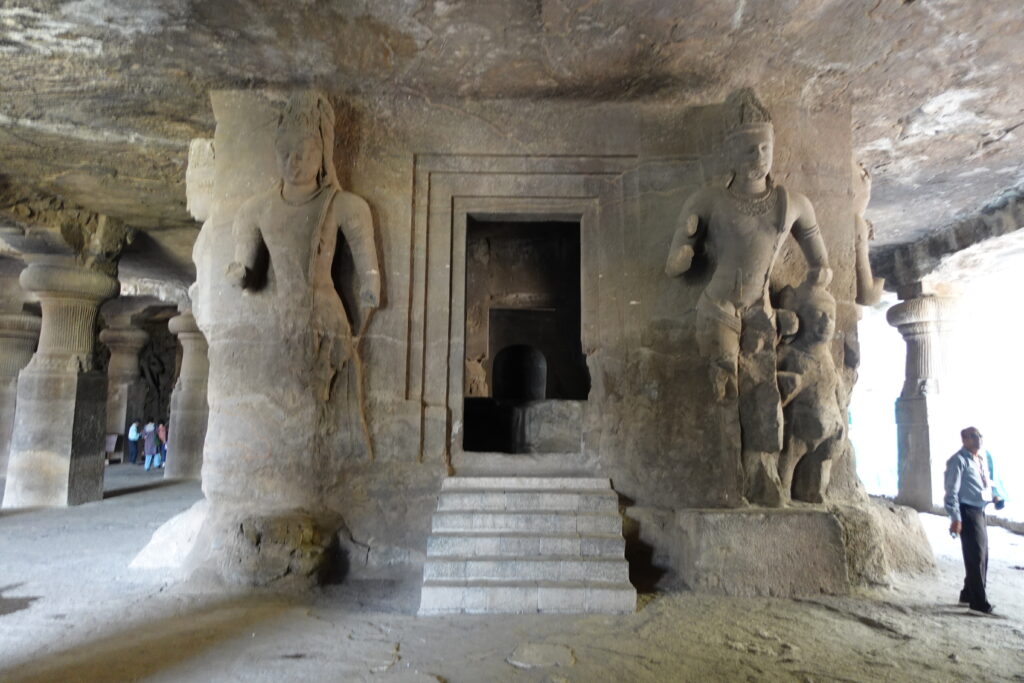
In this stone chamber, protected by these statues(15) The Shiva Linga faith in India: a Hindu view of sexuality in which phallic beliefs are still held in high esteem."The Shiva Linga, which I talked about in the article of the same name, was enshrined in the temple.

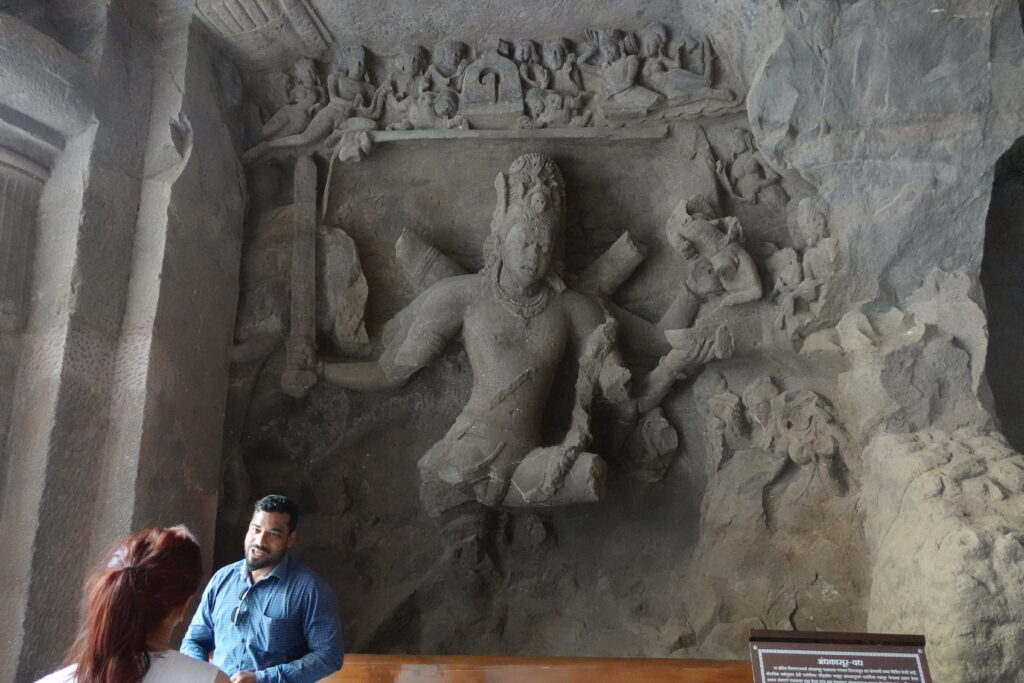
There are many other variations of Shiva carvings in the grottoes, and it is obvious that all of them are highly skilled. It is said that the grottoes were constructed between the 7th and 8th centuries, and that this technique influenced the Ellora Grottoes and later Khajuraho sculptures.
And as I mentioned at the beginning of this article, the highlight of the grottoes is the three-faced statue of Shiva.
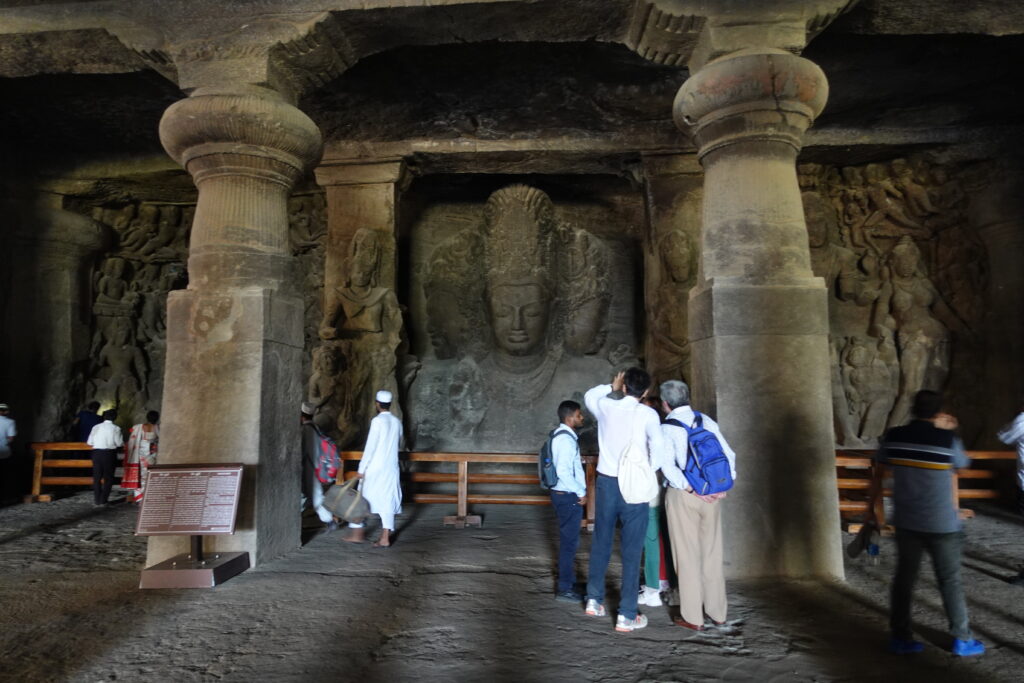
To be honest, I too had not imagined it to be as large as it is! As was the case with Saanchi, the pictures in reference books and guidebooks did not convey its size. I had no idea how big it was before I went there.
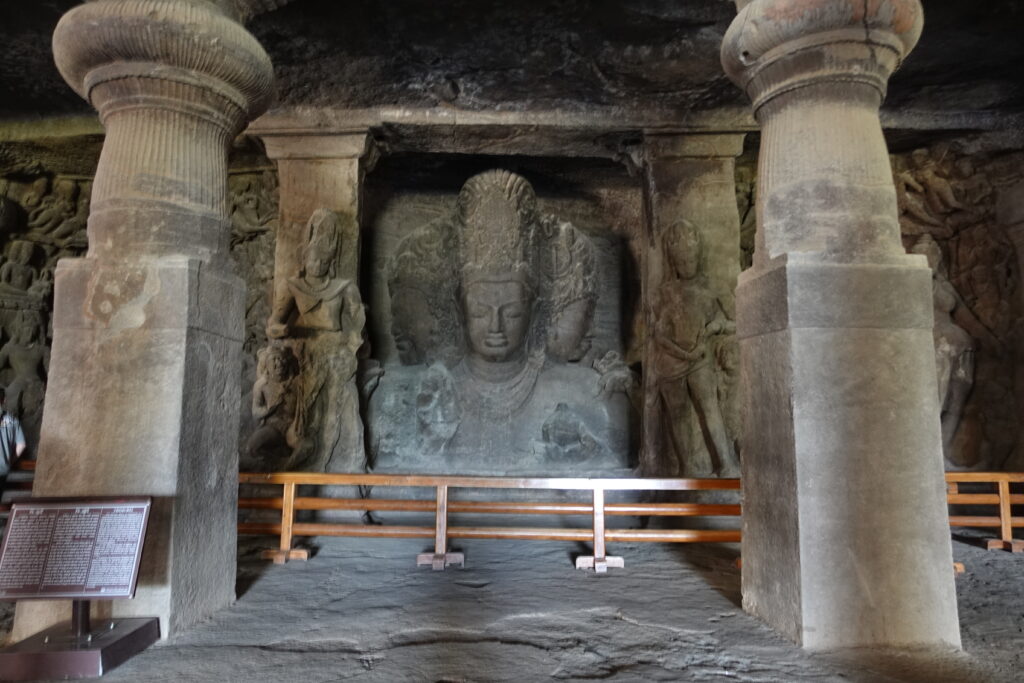
I was completely overwhelmed by this gigantic statue of Shiva, which was about six meters high. It is not only large. Look at the calm and contemplative expression on the front. His eyes are filled with compassion, as if they embrace and see through everything I do.... I feel a spiritual atmosphere here, too.
What's going on? India, isn't it wonderful! So far, I am really enjoying this trip to India! First of all, this time we are touring only the countryside and the island of Elephanta, a place away from the hustle and bustle of the city. This has allowed me to get away from the Indian chaos. This was really great for me, as I am allergic to India. Although I am getting used to the fact that this is my second visit to India, it is still very hard for me.
And all that I am visiting on this trip are works of art that India is proud of. Here I am witnessing a different kind of India from the fervent faith that continues to this day, such as that of Haridwar. As someone who enjoys this kind of spiritual atmosphere, I could not help but enjoy it.
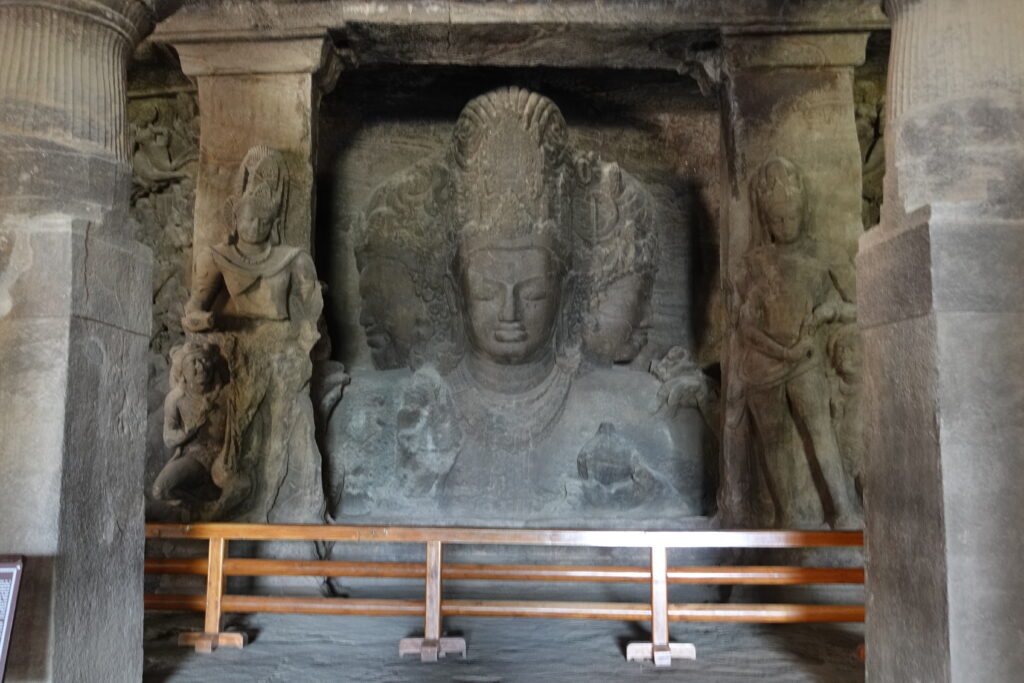
I would also like to share my personal experience with this three-faced image of Shiva.
This is a personal story, so please take it half-truthfully, but I was actually saved by this statue.
Let me be more specific. This statue cured my stomachache.
In fact, I had been suffering from stomach pains since I arrived at Elephanta Island. I had come this far safely with Khajuraho and Saanchi, but finally I had to go back.that (something mentioned before which is distant psychologically or in terms of time)I was pale, but there was nothing I could do about it. This is an isolated island on land. Even if I wanted to go home, I could not. (*I'll tell you more about that in a future article.(8) Indian baptism finally arrived. Down with severe vomiting and diarrhea. So much for the trip..."(See article in)
As I climbed the steep stairs I had a decision to make. I had to go to the bathroom. But I absolutely hate Indian toilets....
Sure enough, there was a restroom near the entrance to the Elephanta Grottoes, but not for me.
So I decided to get over it with my spirit.
But I could no longer be so naive. Just when I thought I had come this far, I came across this three-faced statue.
The magnificence of this three-faced statue has been described above. I was so impressed with this statue that I was just mesmerized by it. I was just crazy about it. I was so absorbed in the statue that I could not move from in front of it for a while.
And then I suddenly realized: my stomach pain had stopped! Strangely enough, my abdominal pain had stopped! This surprised me! And even after I returned to Mumbai, the stomachache was gone and my stomach was completely back to normal.
Is this just a coincidence....
If we call it coincidence, it may be coincidence. But if we call it inevitable, we could also call it inevitable.
If I believe that this miracle is due to Lord Shiva, then it must be his power already. Suppose I visited this place 1,000 years ago and told the villagers about the miracle (coincidence) that cured my stomachache. What would happen then? The villagers would start praying to Shiva for blessings. And among those people, some may encounter some miracles (by chance). This repetition may eventually push this place up to the status of a sacred place of faith.
On the nature of such faith, by Tatsuo MorimotoHinduism: Sacred and Secular in India."The following is a long but very interesting article. This is a bit long, but it is very interesting and I would like to share it with you.
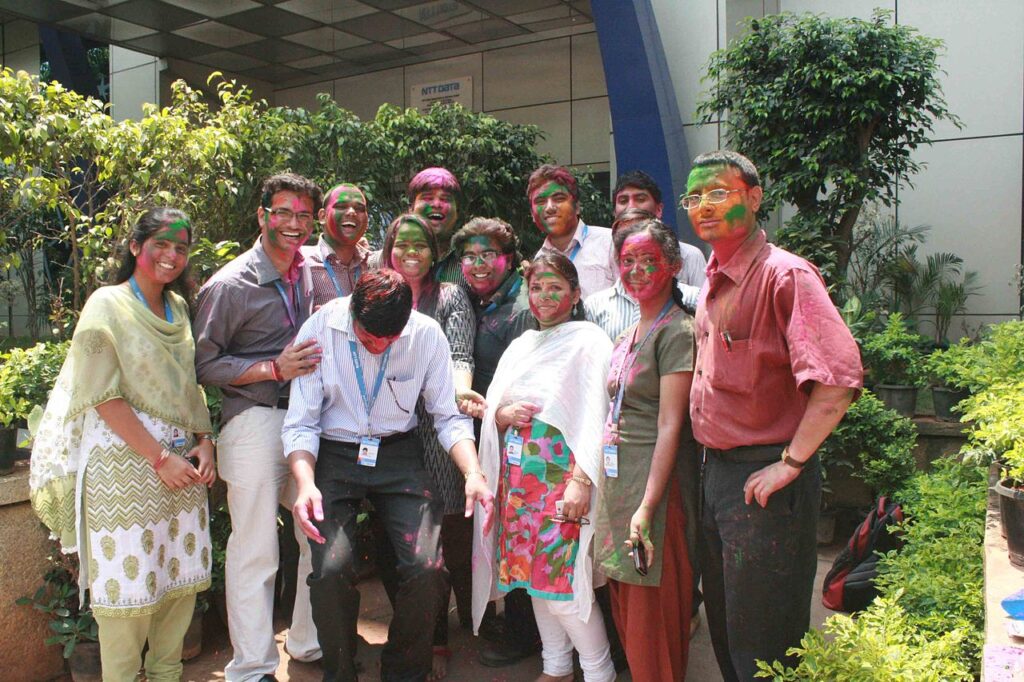
Hinduism is such a religion
I was so excited about my first Holi Festival that I felt as tired as if I had been in a snowball fight in my youth, and sat down in the shade of a tree with my friend, a professor of religious studies. At that time, I suddenly remembered Basho's famous haiku, "Omoshiro te yatte sado yonte sado Ukubuna kana," and I remember introducing it to my friend who was interested in Japanese haikai, and we shared the same feeling.
Then we sat for a while in the languid silence of spring, each of us lost in our own thoughts, until I remembered that for the past six months or so, my thoughts had been tossed about in admiration, disgust, dismay, and longing, but had not yet revealed the true nature of the mysterious religion of Hinduism. I was not sure what to think of it, but I was sure that it was a religion.
In the openness of the Holi festival, I ventured to ask my question to a religious scholar-"What is Hinduism, in a word, a religion?" I asked.
The professor, a devout Vaishnava, seemed surprised for a moment at the sudden question from a foreigner, but eventually understood the meaning of my question and began, "Hinduism is a religion like this, if I may use an analogy.
One day, on his way home from school, a village boy found a dying little bird on the side of the road. The boy watched the bird twitch its wings two or three times, and when it finally stopped moving, he thought nothing of it, drew a circle around the bird with a piece of wood and ran.
The next person to pass by was a farmer returning from his work in the fields. He looked at the carcass of a small bird in a circle curiously for a while, and then, after taking the hoe off his shoulder, he dug a hole, buried the bird, piled pebbles on top of it, and returned home.
As usual in the evening, a group of women with bottles on their heads came to the village communal well to fetch water, chatting and laughing lively. When the women came to the front of the small stone mound, they suddenly stopped talking quietly. The women whispered to each other, then each picked a wild flower from the bushes by the side of the road, placed it on the mound, covered their faces with the edge of their saris, prayed for a moment, and then walked away.
Thus, the little bird mound became a new place of worship for the villagers. Unsurprisingly, it was also home to Garuda, the spirit bird (one of the three principal deities of Hinduism, along with Shiva), a follower of the god Vishnu (one of the three principal deities of Hinduism).cardinal (bird) (Cardinalis cardinalis)(The first time I saw this, I thought it was a good idea.
The pious village head gathered the elders together and a plan to build a new shrine was agreed upon. A few months later, out of nowhere, a sadhu (ascetic) with the Vishnu mark on his forehead arrived, built a hut beside the shrine, and took up residence there, performing daily morning and evening rituals. The villagers, living in poverty, delivered food and clothing to the ascetics.
The following spring, before rice planting, the whole village prayed for a good harvest in front of the shrine, and that year there was neither drought nor flood, resulting in an unusually good harvest. As word of this spread through the village, good men and women from neighboring villages began to visit the shrine on foot or by ox-drawn cart. Thus, a splendid temple was built in a cold village with no name, and it became one of the centers of Vishnu worship for the people of the region.
I had failed to ask if this parable was a real story from somewhere in India, but there was no need to question it. After I had told him this much, the smile faded from the professor's face, and his words suddenly became more serious.
In Hinduism, faith takes precedence over all other religions, even though each sect has its own doctrines and beliefs," said Dr. S. K. Krishnamoorthy, a professor of the Faculty of Religious Studies at the University of Tokyo. In other words, faith interprets doctrines and creeds in any way it chooses.
So the question is.holy masterIt is. I came to the villagedevoteehappened to be in the country.masturbation (euph.)If he is a phony saint who is a money-grubber, the villagers may be led astray by his dubious prophecies and be squeezed out of their money and goods, and in the end, they may even have to give up their wives.
of the one he really isseeking for truthPersonmokshaIf you are the one who has the faith, the villagers will be led to profound truths, and they will daily enjoy the joy of faith and life, love their families and work, and live with faith in others - that is how you can realize heaven on earth.
Indeed, in Hinduism there is idolatry and idolatry denial, merit and non-possession, human abuse and animal sacrifice, nonviolence and self-sacrifice, unrestrained sexuality and stifling asceticism. In this sense, Hinduism is the "encyclopedia" of religions, in other words,anything and everythingIt is the religion of the
And all of them can be justified by "any" interpretation of scripture and doctrine. Thus, the professor's point that Hinduism is a religion of the sacred and the profane, of creation and causation, and that it is up to the guru to decide which way to go.
Hinduism may also be likened to the Ganges, the yellow river that originates in Gangotri, a clear glacier in the Himalayas, and meanders through the plains of Hindustan, engulfing all the life of the people of the region, and is revered as a "holy river" by the Hindus. The Ganges is a "holy river" that is worshipped by Hindus.
Some line breaks have been made to make it easier to read on smartphones, etc.
Chuokoron Shinsha, Tatsuo Morimoto, Hinduism: Sacred and Secular in India, p. 58-62
India, which to us seems like a complicated and mysterious land of wonders, has such a religious background. I was reminded of this when I visited the Elephanta Grottoes.
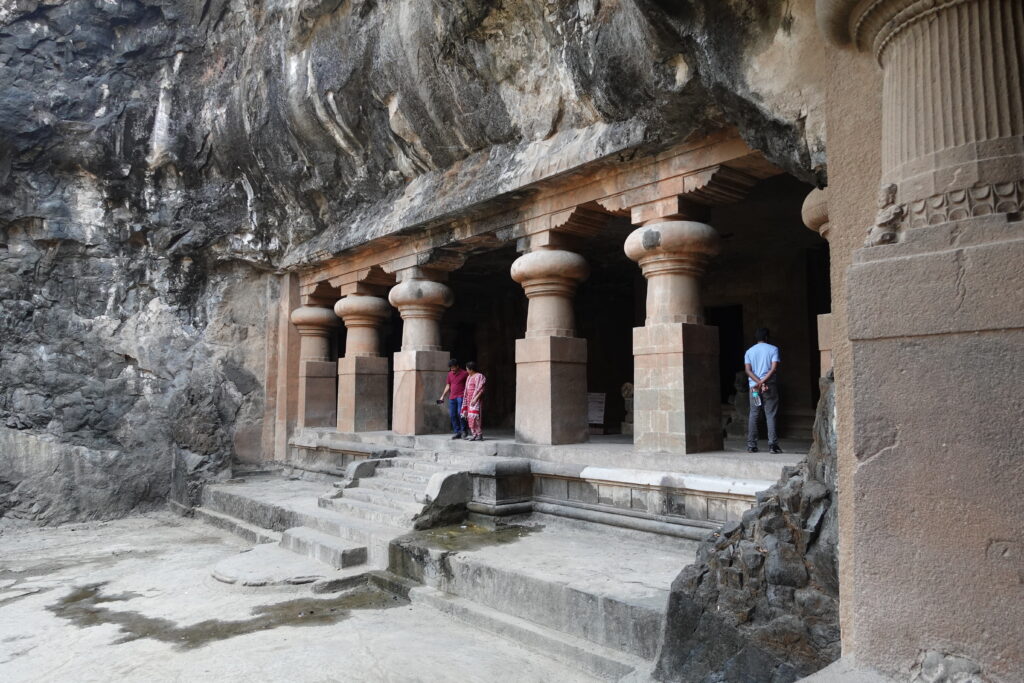
The Elephanta Grottoes were far more wonderful than I had imagined. It was truly a pleasant miscalculation. If you are going to Mumbai, I highly recommend the Shiva statue here. Maybe some miracle will happen to you too?
*Below is an article with reference books on India and Sri Lanka that we have referenced in this travelogue. Please refer to them.
periodA list of recommended reference books to help you learn about Indian history, religion, and culture."
periodA list of recommended books for "those who want to know more about Indian Buddhism."
periodA list of recommended books to help you get to know the Buddhist country of Sri Lanka."
Next Article.
Click here to read the previous article.
Related Articles











